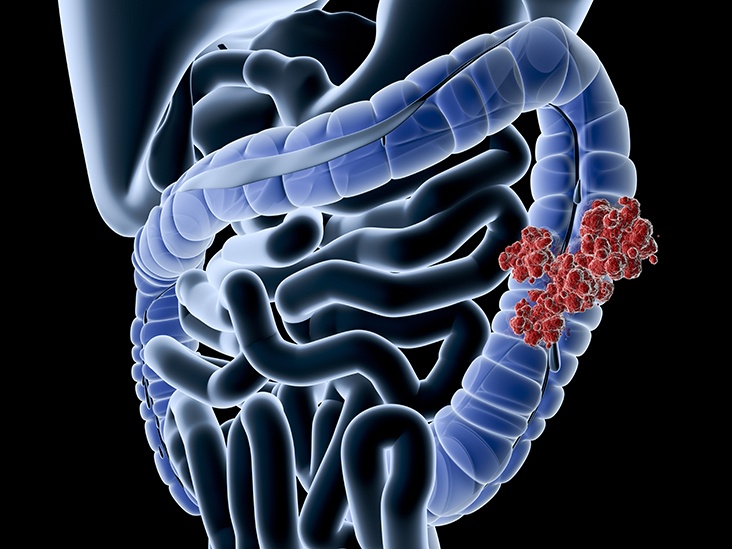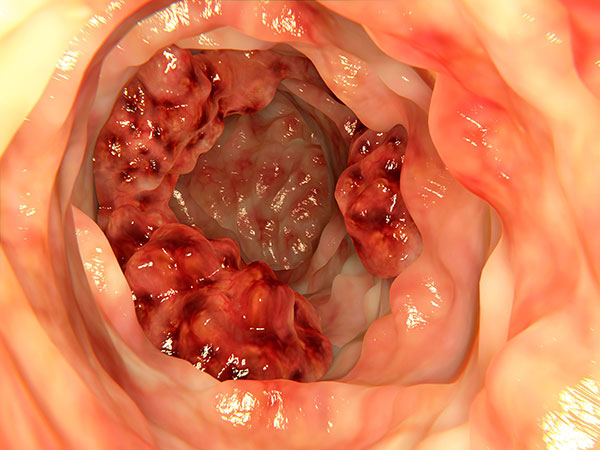By colon cancer we mean the malignant neoplasm which develops in the large intestine or rectum. Colon cancer is one of the most common cancers in the world.
It is estimated that more than 300,000 new cases are diagnosed each year in Europe. It is the 3rd most common neoplasm in women and men and the 2nd leading cause of death from malignant neoplasms.
The exact causes of colon cancer are unknown. Evidence from various studies has linked colon cancer to eating habits. The prevailing view is that a diet high in animal fats and proteins and low in fiber may increase the risk of developing colon cancer. The aggravated family history of a person is also important - first-degree relatives are at risk of cancer 2-3 times more often than the general population. Also people who suffer from genetic intestine disease or suffer from chronic colitis (Chron disease, ulcerative colitis) or have polyps in the intestine are at high risk of developing cancer
Age also matters - people over the age of 50 are more likely to have colon cancer and should have a stool hemoglobin test and regular colonoscopy.
Many people confuse colon cancer with polyps, which are circumscribed structures ranging in size from a few millimeters to a few centimeters and projecting with or without a stem into the intestinal lumen. They are a common problem and can develop into or coexist with adenocarcinoma.
Many times colon cancer can be asymptomatic or manifest with any of the following symptoms:
- Anemia
- Blood in the stool
- Change in defecation habits - persistent diarrhea or constipation
- Weight loss
- Feeling of incomplete defecation
- Deep abdominal pain
Cancer can also cause intedtine obstruction. The symptoms then become intense: vomiting, constipation, persistent pain and distension (bloating) of the abdomen.
The diagnosis of colon cancer is made by the patient's history, clinical examination of the abdomen and finger examination of the intestine. More specialized examinations may follow and are usually colonoscopy, computerized axial tomography (CAT) and magnetic resonance imaging (MRI) which, in addition to the diagnosis, also help in the staging of the disease preoperatively. In recent years, virtual colonoscopy or colonography is also used, which is a rapidly evolving and non-invasive imaging examination with the help of CT scan. Laboratory tests used are the detection cancerous markers in the blood that increase in colon cancer (CEA and CA-19).
Different stages of colon cancer are described by the scientific term Dukes:
- Dukes A - The tumor is located only in the inner wall of the large intestine.
- Dukes B - The tumor has penetrated the entire wall without affecting the lymph nodes in the area.
- Dukes C - The tumor has spread to one or more lymph nodes in the area.
- Dukes D - Tumor cancer cells have spread to other organs in the body and have formed secondary tumors (metastases).
The main treatment for colon cancer is surgery. In many cases it is combined with radiotherapy and chemotherapy preoperatively to reduce the tumor or postoperatively to prevent or treat metastases.
Surgical removal of the tumor is the most basic treatment. The operation removes a portion of the intestine that includes the tumor and also removes the lymph nodes in the area, where cancer cells can usually enter and cause metastases. The surgery can be performed either openly or laparoscopically or robotically with very good results and faster recovery of the patient. Then the ends of the remaining intestine are reunited. If for some reason the intestine can not be reunited, then through an incision in the abdomen, the surgeon externalizes and fixes the intestine at the level of the skin. This type of surgical procedure is called a colostomy. The contents of the intestine (stool) will come out of the orifice, which will be collected in a special collector.
The colostomy is usually temporary and at a later stage attempts are made to reunite and return the intestine to its place with another surgery. In rare cases, the colostomy may for some reason be permanent. This happens especially when cancer is found in the rectum near the anus. When the tumor to be removed is located in the upper part of the large intestine at the point where it joins the small intestine, then the surgical procedure to remove it and the extraction of the intestine in the abdomen is called an ileostomy. In this case the contents of the intestine will also be collected in the special collector as well as the colostomy. This operation is generally temporary.
 English
English  Ελληνικά
Ελληνικά 

